By Torsten Krause*, Ana Maria Vargas Falla**, Britta Sjöstedt*, Sandra Valencia***, Fariborz Zelli*[1]
A glimpse of hope quickly vanishing
In 2016, Colombia officially emerged from one of the world’s longest internal armed conflicts when the government, under former President Juan Manual Santos, signed a peace agreement with the country’s largest and most influential guerrilla group, the Revolutionary Armed Forces of Colombia – People’s Army, also known as FARC.
Four years have passed since, and while some of Colombia’s departments have been able to enjoy a relatively tranquil time with the retraction of the FARC and the cessation of hostilities and violence, other departments and rural areas, have moved even further away from peace. For decades the FARC had exercised a de-facto state authority with rules and regulation in the territories previously under its control. However, since October 2016, when the FARC retracted from these territories as part of the demobilization process, the void has often been filled by a diverse range of new armed groups including criminal gangs. These gangs, referred to by local authorities as BACRIM,[2] have been trying to seize control of lucrative informal markets including the coca and gold trades. In addition, the power vacuum was filled by other leftist guerilla groups that have been fighting the Colombian state for decades. These include, foremost, the National Liberation Army (ELN)[3], but also former FARC guerilla fighters who rejected or abandoned the re-integration process and formed FARC dissident groups.
Thus far, the outcome of these developments is a complex mixture of violent armed groups, all of which profit financially from the general chaos of the power vacuum. While some of them, such as the ELN, claim to pursue larger political objectives, what all of these groups have in common is their main modus operandi, that implies a dangerous cocktail of illegal practices, violence and intimidation of local populations, including peasants, social leaders, international and local non-governmental organizations (NGOs) as well as large multinational corporations.
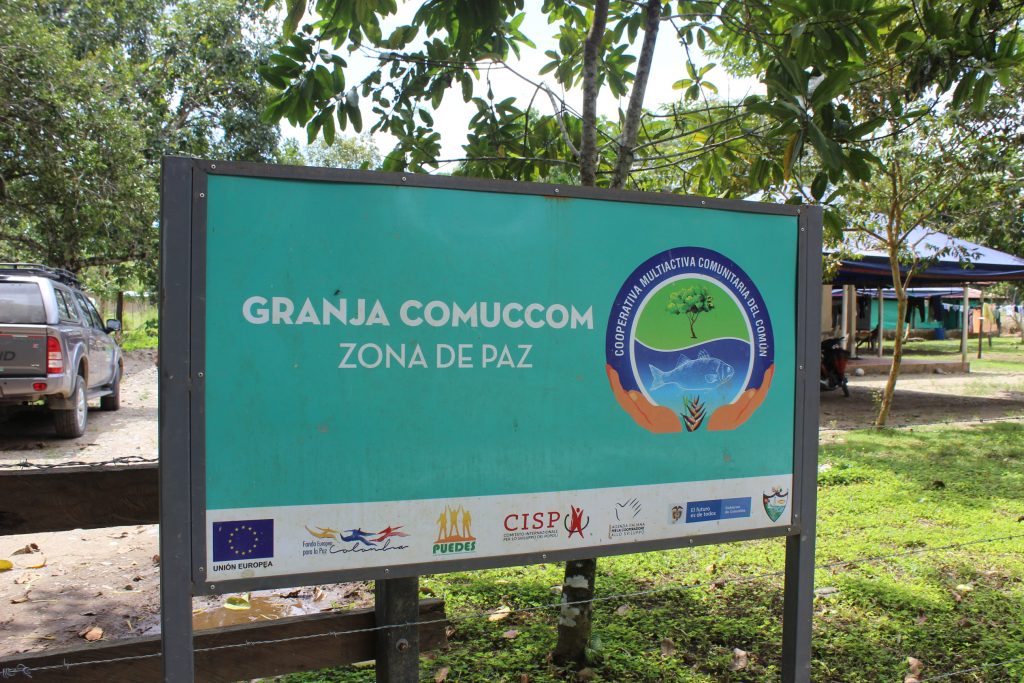
The consequences reverberate through rural Colombia once again in the form of forced displacements of thousands of families in the departments of Antioquia, Caquetá, Cauca, Chocó, Nariño, Norte de Santander, Putumayo, and Santander. Hundreds of civilians have been murdered, including numerous social and indigenous leaders that had demanded access to land and resources, had defended the rights of indigenous peoples, had tried to defend communities from illegal mining and drug trade, had been involved in coca eradication initiatives, or had protected the environment from polluting mining practices and illegal logging[4]. This continuous conflict has earned Colombia the inglorious 2nd and 3rd places, respectively, among the countries with the highest number of assassinations of human right defenders and social and environmental leaders in the past four years (Witness 2017, 2019, UN 2020).
A new victim: The environment
Thus, while it might seem from an outsider’s perspective that the Colombian armed conflict has come to an end, the life of many people in rural areas is in reality marked by ruthless violence and intimidations that have come to haunt areas of the countryside once more. What is new this time is that the targets of harm include not just human beings, such as farmers, social leaders and indigenous people, but also the natural environment. Ever since the cease fire between the FARC and Colombian state in 2014 and the signing of the peace agreement in 2016, deforestation in Colombia has soared and there is a strong overlap between areas that record high levels of violence since the peace agreement and those that exhibit illegal conversion of forests to agricultural land uses, cattle pastures and coca plantations (Prem et al. 2018, Negret et al. 2019, Clerici et al. 2020, Murillo Sandoval et al. 2020). In particular the Amazon frontier departments of Colombia are experiencing a sharp rise in deforestation (see Fig.1) (Clerici et al. 2020).

To make matters worse and more complicated, environmental and social organizations are becoming a target of intimidation and violence too. A recent pamphlet that was circulated, supposedly by a FARC dissident group, sends a warning to anybody who collaborates with organizations working on environmental projects in the Amazons and other regions. The pamphlet explicitly mentions international organizations (namely, the Organization of American States – OAS and USAID), national programs to fight deforestation (Visión Amazonía), research institutions (the Colombian Institute for Amazonic Scientific Research – SINCHI), regional environmental authorities (in particular, the Corporation for the Sustainable Development of the North and Oriental Amazon – CDA; and Corpoamazonia) as well as the Colombian National Park Authority (Infoamazonia, April 16, 2020).[5] In the past months, national park rangers have been increasingly targeted by armed groups, some have been assassinated, and they had to abandon their posts in many of the national parks in the Andean-Amazon region, unable to control intrusion and deforestation.
In recent months alone, deforestation has considerably soared again, and is particularly severe in the Tinigua and La Macarena national parks in the Meta department, as well as in the Nukak indigenous reservation in the Guaviare department (FIP, 2020).[6] There are several explanations for this development, but it is first and foremost attributable to processes of land grabbing, mainly by large landowners, who seek to use the current void and absence of state control to expand their land holdings by cutting down large stretches of forests (Van Dexter and Visseren-Hamakers 2019, Murillo Sandoval et al. 2020). By putting cattle on these newly deforested areas they hope to be able to claim these lands in the future. Put differently, the peace agreement and FARC’s demobilization raise expectations and opportunities of big land owners to eventually obtain legal land titles. Unfortunately, thus, the peace process must be considered an unintended driver of land grabbing and illegal land markets (Murillo Sandoval et al. 2020).
Apart from the serious long-term environmental consequences that deforestation leads to, it also brings to light the underlying issue that fueled the armed conflict in Colombia in the first place, namely the highly unequal access to, and control of, land in Colombia. A small share of landowners possesses the majority of agricultural lands in the country. This unequal distribution was, ironically, perpetuated by armed groups during the conflict due to the violent displacements of small-scale farmers, and it has now further increased in the aftermath of the peace agreement (Guereña 2017).
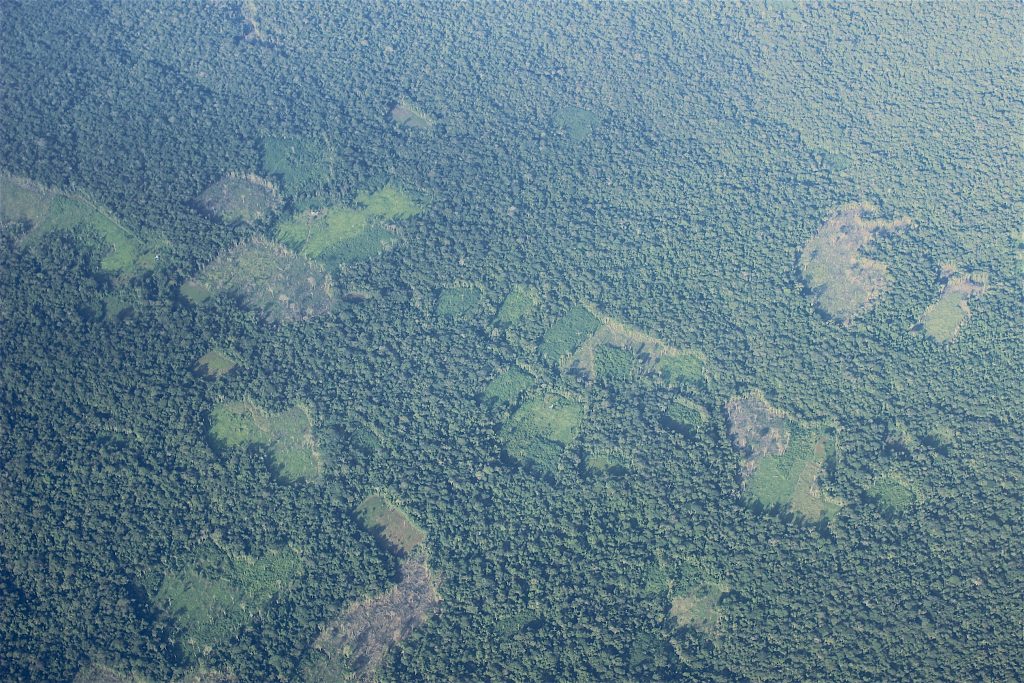
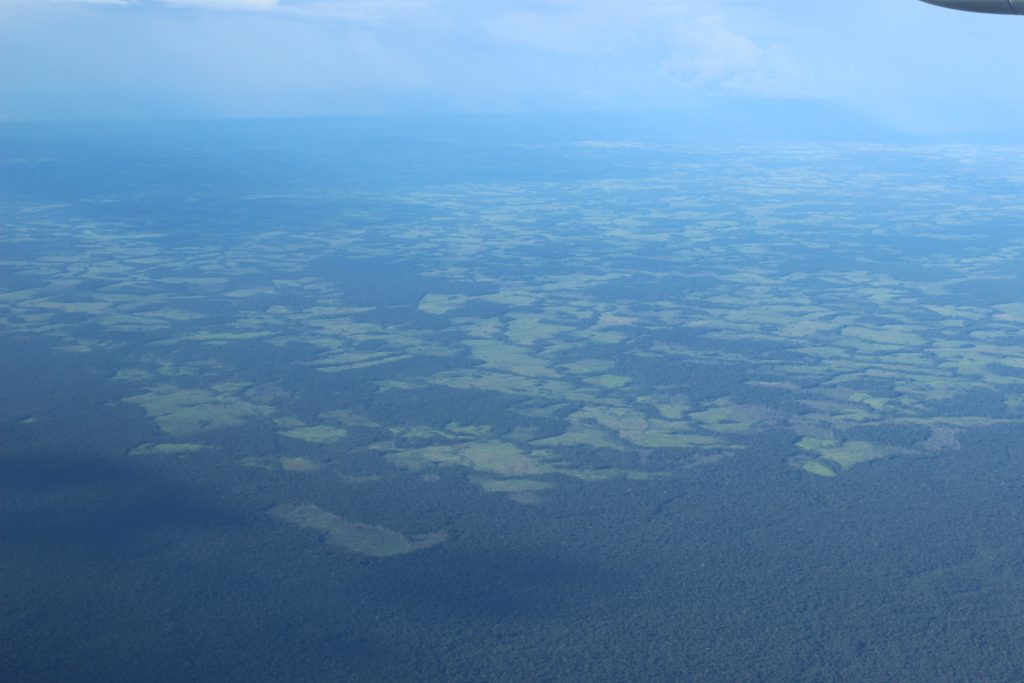
The rise in coca plantations over the past 10 years is another environmentally harmful development that complicates Colombia’s transition to peace (Fig. 2). During the armed conflict the production and trade of cocaine was a major income generating activity for different factions. The FARC, ELN and paramilitaries used it to finance their operations, buy weapons, pay their soldiers and make a lot of money. The high profitability of the globally demanded product, the established system from cultivation, production to export as well as the acquired know-how in Colombia, all facilitate the continuation of the lucrative cocaine trade. The current trade includes some of the actors from before the peace agreement, but also new ones that seek to control the business, most notably notorious Mexican cartels, such as the Gulf, Sinaloa and New Jalisco cartels.
Furthermore, Colombia has also experienced an increase in the mining of minerals, such as gold and coltan (Ballvé 2012, Guevara et al. 2016). By some estimates, approximately 85% of precious ore mining in Colombia, in its majority gold, is illegal.[7] Armed groups are often involved in these mining and trade operations. The use of mercury in the extraction process is resulting in devastating health and environmental consequences for local populations, rivers and forests. A rise in homicides and massacres associated with illegal gold mining has also been reported (Guevara et al. 2016).
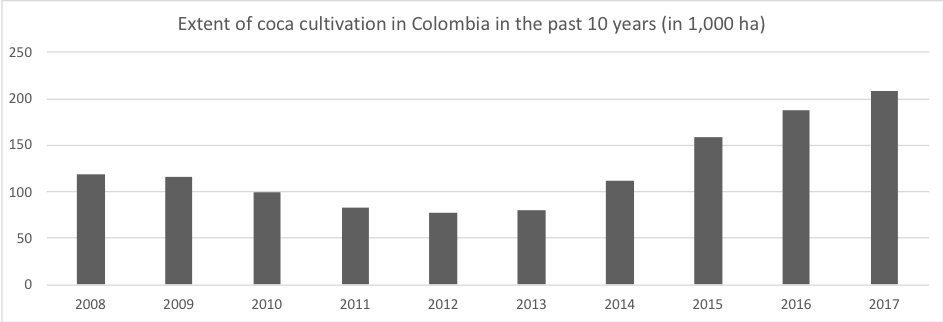
A new set-back by Covid-19
The aforementioned setbacks to the post-conflict transition, and the negative social and environmental impacts in particular, are further exacerbated and reinforced by the Covid-19 pandemic caused by the current coronavirus (SARS-CoV-2). In addition to its detrimental health impacts, the Covid-19 pandemic has developed into a powerful social and political force by occupying and channeling key public discourses and political attention. With these multi-dimensional implications, we argue that the current pandemic poses a major threat for the Colombian peace transition and for the natural environment in several ways.
First, the crisis caused by the spread of the coronavirus and the ensuing strict stay-at-home quarantine, declared nation-wide by President Duque from March 24 this year, has diverted considerable attention and response capacities away from the tensions in rural and frontier areas (FIP, 2020, p. 16). This reinforces the already existing governance gaps in these areas at a time when both local vulnerable communities and the environment are in even higher demand of protection.
With regard to vulnerable groups, the violence in Colombia’s rural areas has continued despite the quarantine, and there have been numerous registers of assassinations of social and indigenous leaders during the lockdown.[8] The Ideas for Peace Foundation (FIP – Fundación Ideas para la Paz in Spanish) argues that social and indigenous leaders can be more vulnerable during the quarantine as their routines and locations become more predictable. In its recent report on armed conflict dynamics during the pandemic FIP provided evidence showing that attacks on oil pipelines have intensified over the first four months of 2020, while deforestation and illegal mining practices are persisting.
These worrying developments notwithstanding, there are a few signs of improvement. For one, the overall number of attacks carried out by armed groups has declined in April. This may be explained by the ELN’s declaration of cease fire with a view to the corona crisis (FIP, 2020, p. 8). Likewise, the number of violent deaths has been steadily decreasing since early 2019 in municipalities that are implementing specific initiatives based on the peace agreement. These include the Development Programs with Territorial Focus (PDET in Spanish) and the National Program for the Integral Substitution of Illicit Crops (PNIS in Spanish) (ibid., p. 13). Nonetheless, a few areas have not followed this positive trend though and instead witnessed and increase in the death toll. This goes for Santa Marta in the Magdalena department, Tarazá and Segovia in Antioquia, and most notably in El Tambo in Cauca (22 violent deaths between January and April 2020, compared to 8 during the same period in 2019) (ibid., p. 15).
With respect to the environment, armed groups, settlers (colonos) and landgrabbers have been further moving into forested areas, causing massive deforestation during the coronavirus crisis, while environmental organizations, both public and private ones, can do even less due to the quarantine-related mobility restrictions (FIP, 2020). The example of Brazil gives a bleak outlook of what more is about to happen in Colombian Amazon regions. In Colombia’s biggest neighbor, deforestation in the Amazon region has soared considerably in the first weeks of the Covid-19 pandemic, also due to the reduced enforcement power of the national environmental agencies.
In addition to these direct social and ecological consequences of pandemic, we expect stark indirect negative impacts, fueled by global economic downturn. The associated fall in demand for oil has already resulted in a slump of oil prices, which, in turn, has entailed a substantial increase of the price for gold. This provides an incentive to further expand gold mining activities and will likely exacerbate violence and its severe negative social and environmental repercussions (Guevara et al. 2016, Rodríguez and Galvis 2016).
As one example of such a dynamic, the Wiwa indigenous group, located in the Guajira department in the north of the country, reported that, during the pandemic, illegal mining of gold in their ancestral territory has intensified. Studies conducted in the area prior to the pandemic had already revealed high concentrations of heavy metals in rivers and fish attributable to mining activities.[9] These activities are carried out by outsiders who carry weapons and are often linked to armed groups. Besides the immediate concerns for security and environment,[10] the Wiwa community is worried about a heightened risk of SARS-Cov2-infection by the illegal miners (FIP, 2020).
A challenging road ahead
Colombia’s transition to peace is heading towards a difficult path and the Covid-19 pandemic is most likely more than a minor roadblock. Due its major social and environmental consequences, it may undermine the small positive efforts taken towards a sustainable peace so far.
Where does this lead us? On the one hand, and in spite of these developments and dynamics, many people in Colombia do still believe in the peace process. The FARC party, composed of demobilized leaders, frequently reinstates its commitment to the process. Efforts continue to integrate FARC ex-combatants into civilian life. Some of these efforts include agricultural projects, training programs and conservation initiatives (e.g. Ambientes para la Paz – Environments for Peace program[11]). In addition, even if peace talks have not succeeded with the ELN, some of its members are starting to demobilize[12].
On the other hand, the Colombian government struggles to build lasting and sustainable peace. Already before the current pandemic, the government had been in a balancing act. It had to keep up its discourse to build lasting peace and to satisfy the demands of international forest conservation activists and project donors (Krause, 2020). On the other hand, pressure has been mounting from within the government and the private sector to gear up the extraction of natural resources in the form of mining, infrastructure and industrial agriculture (DNP 2018). Such activities, however, are more akin to traditional models of economic growth.
There is no doubt that Colombia’s social and environmental problems are considerably shaped by global market demands for agricultural produce, oil, minerals and coca. This notwithstanding, there are fundamental domestic reasons, starting with governmental policies that directly and indirectly incentivize environmental degradation. The strong inequalities in land access and ownership that have been underlying the decade-long armed conflict have still not been tackled sufficiently. Instead, the severe enforcement gaps to address land grabbing and illegal mining de facto turn a blind eye to local corruption, violence and assassinations. As long as these contradictions and shortcomings are not openly discussed and acted upon in a comprehensive manner, the armed conflict over resources and land will be perpetuated – and with it the severe social and environmental crisis in Colombia.
References
Ballvé, T. 2012. Everyday State Formation: Territory, Decentralization, and the Narco Landgrab in Colombia. Environment and Planning D: Society and Space 30:603-622.
Clerici, N., D. Armenteras, P. Kareiva, R. Botero, J. P. Ramírez-Delgado, G. Forero-Medina, J. Ochoa, C. Pedraza, L. Schneider, C. Lora, C. Gómez, M. Linares, C. Hirashiki, and D. Biggs. 2020. Deforestation in Colombian protected areas increased during post-conflict periods. Scientific Reports 10:4971.
DNP. 2018. Bases del Plan Nacional de Desarollo 2018-2022. Page 945 in D. N. d. Planeación, editor. Government of Colombia, Bogotá.
FIP. 2020. Dinámicas de la Confrontación Armada y su Impacto Humanitario y Ambiental: Tendencias en la Pandemia – Enero a Abril 2020. Fundación Ideas para la Paz, Bogotá.
Guereña, A. 2017. A Snapshot of Inequality – What the Latest Agricultural Census Reveals About Land Distribution in Colombia. Oxfam.
Guevara, E. L., N. Duarte, and E. Salcedo-Albarán. 2016. Introduction to Trafficking of Gold and Coltan in Colombia. Vortex Foundation, Bogotá.
Krause, T., Reducing deforestation in Colombia while building peace and pursuing business as usual extractivism? Journal of Political Ecology, 2020. 27(1): p. 17.
Murillo Sandoval, P. J., K. Van Dexter, J. Van Den Hoek, D. Wrathall, and R. Kennedy, E. . 2020. The end of gunpoint conservation: Forest disturbance after the Colombian peace agreement. Environmental Research Letters.
Negret, P. J., L. Sonter, J. E. M. Watson, H. P. Possingham, K. R. Jones, C. Suarez, J. M. Ochoa-Quintero, and M. Maron. 2019. Emerging evidence that armed conflict and coca cultivation influence deforestation patterns. Biological Conservation:108176.
Prem, M., S. Saavedra, and J. F. Vargas. 2018. End-Of-Conflict Deforestation: Evidence from Colombia’s Peace Agreement. Universidad de Rosario, Bogotá.
Rodríguez, C. A., and S. R. Galvis. 2016. El oro, la contaminación y los seres del agua. Visiones locales de los impactos ambientales de la minería en el mundo acuático de la Amazonia colombiana., Tropenbos Internacional Colombia.
UN. 2020. Colombia: ‘Staggering number’ of human rights defenders killed in 2019. United Nations, n/a.
Van Dexter, K., and I. Visseren-Hamakers. 2019. Forests in the time of peace. Journal of Land Use Science:1-16.
Witness, G. 2017. Environmental Activists. Global Witness, London.
Witness, G. 2019. Enemies of the state? How governments and business silence land and environmental defenders.
[1] Affiliation: *Lund University, ** Swedish International Centre for Local Democracy, *** Chalmers University of Technology.
[2] In its nomenclature of 2016, the Ministry of Defense (through the Directiva permanente 15 de 2016)officially distinguished Criminal Bands (Bandas Criminales – BACRIM) from Organized Armed Groups (Grupos Armados Organizados – GAO)and Organized Crime Groups (Grupo Delictivo Organizado – GDO).
[3] There have been several attempts to hold peace negotiations between the Colombian Government and the ELN. In October 2016, both parties announced the initiation of peace talks, which officially started in February 2017 in Quito, Ecuador. However, the talks faced several obstacles including the ELN refusing to release kidnapped hostages. The negotiations were cancelled by President Ivan Duque after ELN attacked a military school in Bogotá killing 21 people and injuring 68 in January 2019.
[4] According to January 2020 data from the Colombia Ombudsman Office, an estimate of 555 social leaders were assassinated since 2016 (https://www.defensoria.gov.co/es/nube/enlosmedios/8996/Al-menos-555-l%C3%ADderes-sociales-han-sido-asesinados-entre-2016-y-2019-Defensor%C3%ADa-del-Pueblo.htm).
[5] See: https://www.elespectador.com/noticias/medio-ambiente/panfletos-firmados-por-disidencias-de-las-farc-invitan-deforestar-la-amazonia-articulo-914948
[6] See: https://www.eltiempo.com/vida/medio-ambiente/la-deforestacion-va-a-un-ritmo-exagerado-con-o-sin-pandemia-488750
[7] See: https://www.eltiempo.com/vida/medio-ambiente/coronavirus-en-colombia-francia-marquez-explica-por-que-mineria-se-incrementara-tras-la-pandemia-490444
[8] See: https://www.elespectador.com/colombia2020/pais/los-rostros-y-luchas-de-los-lideres-sociales-asesinados-en-lo-corrido-del-2020-articulo-913792
[9] https://sostenibilidad.semana.com/medio-ambiente/articulo/la-mineria-ilegal-azota-al-territorio-wiwa/47864
[10] https://www.eltiempo.com/vida/medio-ambiente/en-cuarentena-indigenas-denuncian-mineria-ilegal-en-su-territorio-490582
[11] https://www.co.undp.org/content/colombia/es/home/projects/ambientes-para-la-paz.html
[12] https://www.semana.com/nacion/articulo/colombia-no-puede-tener-la-pandemia-del-virus-y-la-pandemia-de-la-violencia/667189

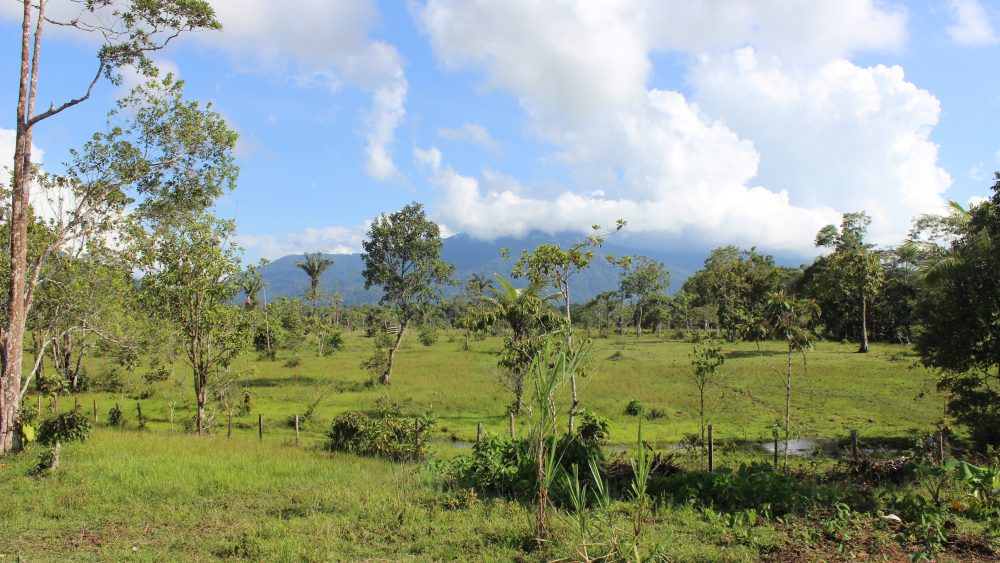
Sonia
Amazing! Its genuinely awesome post, I have got much clear idea on the topic of from this paragraph.|
Lynda
Very good article. I certainly love this site. Continue the good work!|